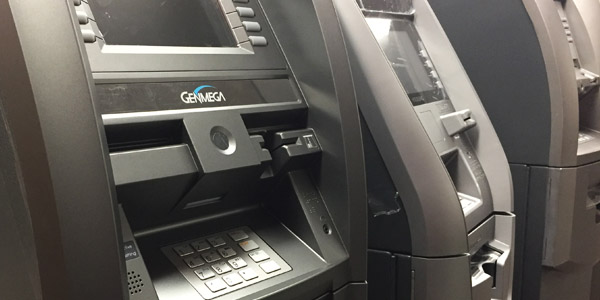Maximizing Returns: Strategies For Investing In ATMs
Smart investors are always looking for ways to make the most money while minimizing risk in today’s ever-changing financial world. Investing in Automated Teller Machines (ATMs) is one of these chances that has become more popular in recent years. With the increasing reliance on cash and the continued expansion of digital banking, ATMs remain a vital component of the financial ecosystem. However, investing in ATMs requires a nuanced approach and a solid understanding of the market dynamics. In this comprehensive guide, we’ll delve into the strategies for maximizing returns through ATM investments.
The ATM Investment Landscape
ATMs serve as convenient access points for individuals to withdraw cash, check balances, and perform other banking transactions. Despite the rise of digital payments, cash usage remains prevalent, making ATMs indispensable in many communities.
From a financial perspective, investing in ATMs can offer several advantages. Unlike traditional real estate investments, ATMs require minimal maintenance and have relatively low operational costs. Additionally, ATM investments can generate passive income through transaction fees charged to users. Furthermore, as technology evolves, newer ATM models equipped with advanced features present opportunities for enhanced profitability.
Factors Influencing ATM Investment
Several factors influence the profitability and viability of ATM investments. L It’s very important where the ATM is located because machines in busy places like shopping malls, airports, and cities tend to get more transactions. Additionally, understanding demographic trends and consumer behavior can help identify lucrative locations for ATM deployment.
Moreover, regulatory considerations and compliance with industry standards are paramount in the ATM investment landscape. Investors must stay abreast of regulations governing ATM operations, including security protocols and accessibility requirements. Non-compliance can result in fines and legal liabilities, underscoring the importance of thorough due diligence.
Diversification and Portfolio Allocation
As with any investment plan, spreading out your ATM investments across different types of assets is the best way to lower your risk and get the best results. Investors should consider spreading their investments across multiple ATM locations to minimize exposure to localized risks. Diversification not only safeguards against unforeseen events, such as economic downturns or technological disruptions but also ensures a more stable income stream.
Furthermore, portfolio allocation plays a crucial role in optimizing returns from ATM investments. By balancing investments in high-traffic areas with those in underserved communities, investors can achieve a diversified portfolio that caters to a broad spectrum of consumer needs. Additionally, allocating capital towards upgrading existing ATMs with advanced features can enhance profitability and differentiate the investment portfolio.
Risk Management Strategies
While ATM investments offer lucrative opportunities, they are not without risks. Operational challenges, such as machine downtime and vandalism, can impact profitability and disrupt cash flow. Therefore, implementing robust risk management strategies is essential for safeguarding investments.
One approach to risk management is leveraging technology to monitor ATM performance in real time. Remote monitoring systems enable investors to track transaction volumes, identify maintenance issues, and detect suspicious activities promptly. Moreover, partnering with reputable ATM operators or deploying managed services can alleviate operational burdens and ensure optimal performance.
Guide to Investing in ATMs
When considering investing in ATMs, it’s imperative to conduct thorough research and due diligence. Here’s a step-by-step guide to navigating the ATM investment process:
Market Research: Begin by assessing the demand for ATM services in target locations. Analyze demographic data, foot traffic patterns, and competition to identify optimal deployment sites.
Financial Analysis: Evaluate the potential returns and operating costs associated with ATM investments. Calculate cash flow projections, taking into account transaction fees, maintenance expenses, and regulatory compliance costs.
Location Selection: Select ATM locations strategically based on factors such as proximity to banks, retail outlets, and transportation hubs. Prioritize high-traffic areas with a consistent flow of potential users.
Legal and Regulatory Compliance: Ensure compliance with local regulations governing ATM operations, including licensing requirements, security standards, and accessibility guidelines.
Partnership and Management: Consider partnering with experienced ATM operators or deploying managed services to streamline operations and minimize risks. Check out possible partners’ past work, reputation, and the services they offer.
Monitoring and Optimization: Implement remote monitoring systems to track ATM performance and identify opportunities for optimization. Regularly review transaction data, user feedback, and market trends to adapt investment strategies accordingly.
Diversification and Expansion: Continuously assess the performance of ATM investments and explore opportunities for diversification and expansion. Consider investing in emerging technologies, such as contactless payments and biometric authentication, to stay ahead of market trends.
By following this guide to investing in ATMs and implementing sound investment strategies, investors can maximize returns and capitalize on the lucrative opportunities presented by ATM investments.
Conclusion
Investing in ATMs offers a unique opportunity to generate passive income and diversify investment portfolios. By understanding the fundamentals of the ATM investment landscape, identifying strategic deployment locations, and implementing robust risk management strategies, investors can maximize returns while minimizing risk. However, success in ATM investments requires diligent research, prudent decision-making, and continuous monitoring of market dynamics. ATM investments can be a good addition to any investor’s portfolio if they are done carefully and with the right strategy. They offer steady returns and the chance for long-term growth.
Stay in touch to get more updates & news on Discover Headline!







